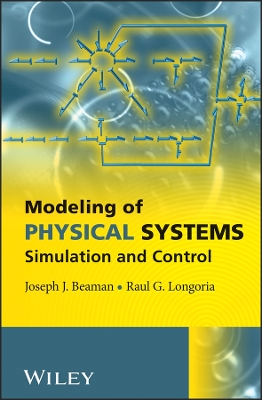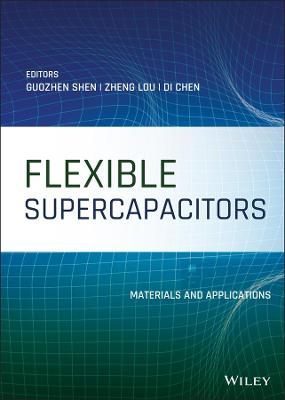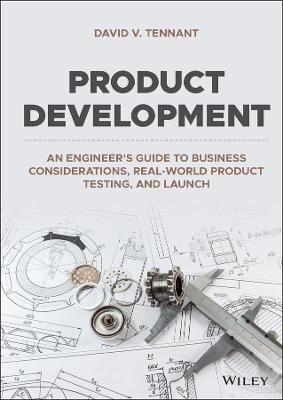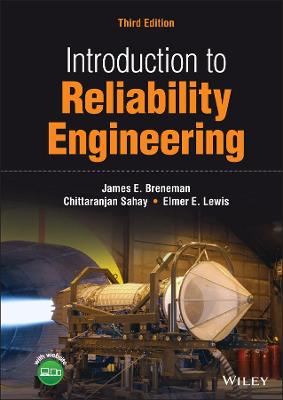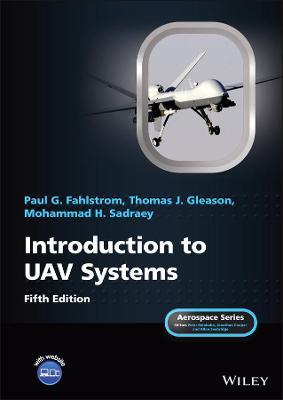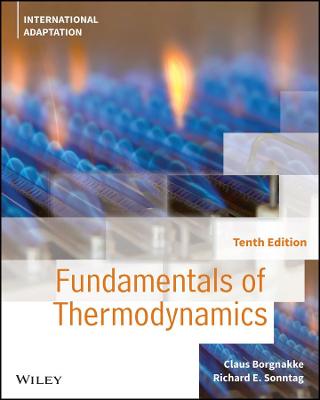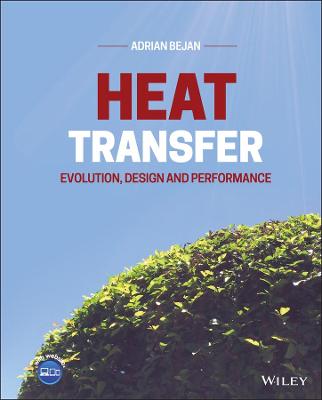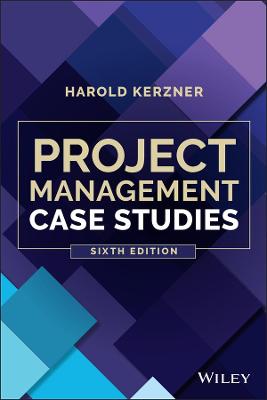Metallic Powders for Additive Manufacturing
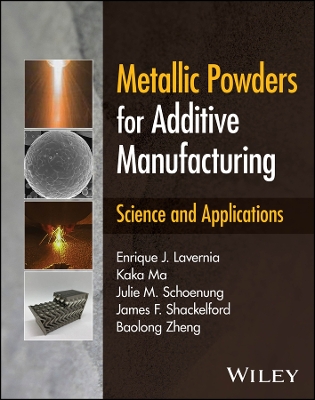 -10%
portes grátis
-10%
portes grátis
Metallic Powders for Additive Manufacturing
Science and Applications
Ma, Kaka; Schoenung, Julie M.; Zheng, Baolong; Shackelford, James F.; Lavernia, Enrique J.
John Wiley & Sons Inc
03/2024
608
Dura
9781119908111
15 a 20 dias
Preface xix
Acknowlegments xxiii
Part I Atomization of Metallic Powder 1
1 Overview of Atomization Techniques 3
1.1 History of Metallic Powder and Atomization Techniques 3
1.1.1 Metal Powders 3
1.1.2 Atomizer Designs 4
1.2 Melt Atomization 8
1.3 Gas Atomization (GA) 9
1.4 Vacuum Induction Gas Atomization (VIGA) 11
1.5 Electrode Induction Melting Gas Atomization (EIMGA) 12
1.6 Plasma Rotating Electrode Process (PREP) 15
1.7 Spark Plasma Discharge Spheroidization (SPDS) 16
1.8 Plasma Induction Gas Atomization (PIGA) 18
1.9 Plasma-Atomized Wire (PAW) 19
1.10 Water Atomization (WA) 20
1.11 Summary 22
Nomenclature 23
References 23
2 Atomization 25
2.1 Introduction 25
2.2 Atomization Technology 26
2.2.1 Energy Consumption During Atomization 26
2.2.2 Molten Metal Atomization Methods 27
2.2.3 Subsonic Gas Atomization 28
2.2.4 Supersonic Gas Atomization 30
2.2.5 Ultrasonic Gas Atomization (USGA) 31
2.2.6 Centrifugal Atomization 34
2.2.7 Mono-sized Droplet Atomization 36
2.3 Formation of Droplets 38
2.3.1 Regimes of Liquid Breakup 38
2.3.2 Mechanisms of Atomization 38
2.3.3 Atomization of Cylindrical Liquids 43
2.3.4 Atomization of Liquid Sheets 45
2.3.5 Droplet Formation Under Conventional Gas Atomization Conditions 47
2.3.6 Droplet Formation During Centrifugal Atomization 49
2.4 Control of Atomization Parameters 50
2.4.1 Classification of Processing Variables 50
2.4.2 Factors Affecting Metal Flow Rate 50
2.4.3 Metal Flow Rate 55
2.4.4 Gas Flow Rate and Velocity 57
2.5 Powder Size Distribution 61
2.5.1 Powder Size 62
2.5.2 Size Distribution 63
2.6 Effect of Processing Variables 64
2.6.1 Important Atomization Variables 64
2.6.2 Atomization Pressure 64
2.6.3 Liquid Flow Rate 66
2.6.4 Gas Velocity 67
2.6.5 Gas Flow Rate 69
2.6.6 Mechanical Disturbances 70
2.6.7 Physical Properties of Atomization Gas 71
2.6.8 Liquid Viscosity 71
2.6.9 Liquid Surface Tension 73
2.6.10 Fluid Temperature 74
2.6.11 Solidification Event 76
2.6.12 Apex Angle 78
2.6.13 Variables in Centrifugal Atomization 78
2.7 Theoretical Models of Atomization 80
2.7.1 Breakup of Liquid Rods or Fragments 80
2.7.2 Formation of Droplets by Sheet Breakup 82
2.8 Empirical Models 86
2.8.1 Nukiyama and Tanasawa Analysis 87
2.8.2 Wigg Analysis 87
2.8.3 Kim and Marshall Analysis 90
2.8.4 Schmitt Analysis 91
2.8.5 Weiss and Worsham Analysis 91
2.8.6 Lubanska Analysis 92
2.9 Summary 94
Nomenclature 94
References 96
3 Heat Transfer and Solidification of Droplets 101
3.1 Introduction 101
3.2 Important Thermal and Solidification Conditions 103
3.2.1 Thermal Conditions 103
3.2.2 Solidification Considerations 105
3.3 Heat Transfer 107
3.3.1 Heat Transfer Mechanisms 107
3.3.2 Heat Transfer Coefficient 109
3.3.3 Gas Velocity 111
3.3.4 Droplet Velocity 112
3.4 Nucleation 116
3.4.1 Homogeneous Nucleation 117
3.4.1.1 Free Energy of Nucleation 117
3.4.1.2 Nucleation Rate 120
3.4.1.3 Homogeneous Undercooling 121
3.4.2 Heterogeneous Nucleation 125
3.4.2.1 Heterogeneous Nucleants 126
3.4.2.2 Heterogeneous Nucleation Undercooling 128
3.4.2.3 Distribution of Nucleants 130
3.5 Solidification of Droplets 134
3.5.1 Temperature Distribution in Droplets 135
3.5.2 Newtonian Solidification 136
3.5.3 Cooling Rate 137
3.5.4 Solidification Time 140
3.5.5 Interfacial Velocity 141
3.5.5.1 Equilibrium Solidification 141
3.5.5.2 Dynamic Solidification 143
3.5.5.3 Stepwise Growth 145
3.5.5.4 Experimentally Determined Interfacial Velocities 147
3.6 Microstructural Development 151
3.6.1 Solidification Morphology 151
3.6.2 Microstrutural Refinement 155
3.6.2.1 Dendrite Arm Spacing 155
3.6.2.2 Grain Size 159
3.6.3 Phase Selection 162
3.6.4 Solute Redistribution 166
3.7 Summary 169
Nomenclature 170
References 172
4 Composite Powders for Additive Manufacturing 179
4.1 Introduction 179
4.2 Fabrication Methods 180
4.2.1 Atomization and Co-injection 180
4.2.2 Atomization of Premixed MMCs 186
4.2.3 Reactive Atomization 186
4.2.3.1 Gas-Liquid Interactions 186
4.2.3.2 Liquid-Liquid Interactions 192
4.2.3.3 Liquid-Solid Interactions 192
4.3 Incorporation of Reinforcements During Co-injection 193
4.3.1 Incorporation Behavior of Reinforcements 193
4.3.2 Penetration of Semiliquid Droplets 197
4.3.2.1 Energy Balance 198
4.3.2.2 Force Balance 200
4.3.2.3 Combined Energy and Force Balance 201
4.3.2.4 Penetration Depth 204
4.3.2.5 Particle Type, Morphology, and Solid Fraction 204
4.3.3 Penetration of Solid Droplets 206
4.4 Particle Behavior During Solidification 207
4.4.1 Engulfment of Reinforcements by Solid-Liquid Interface 207
4.4.1.1 Mass Balance 209
4.4.1.2 Force Balance 209
4.4.1.3 Thermal Field 210
4.4.1.4 Thermal Field and Force Balance 211
4.4.1.5 Engulfment During Droplet Solidification 211
4.4.2 Mechanical Entrapment of Reinforcements by Solidification Fronts 213
4.4.3 Reinforcement-Induced Nucleation 214
4.4.3.1 Free Energy Effects 214
4.4.3.2 Thermal Effects 215
4.5 Other Methods for Fabricating MMC Powders 219
4.5.1 Mechanical Milling and Cryomilling 220
4.5.2 Surface Coating 224
4.5.3 Reaction Synthesis 226
4.6 Summary 227
Nomenclature 228
References 230
5 Diagnostic and Characterization Techniques 235
5.1 Introduction 235
5.2 Flow Visualization Techniques 235
5.3 Particle Image Velocimetry (PIV) 239
5.4 Particle Counting, Sizing, and Velocity Probe (PCSV-P) 243
5.5 High-Speed Cinematography/Video 246
5.6 High-Speed Off-Axis Holographic Cinematography 249
5.7 Infrared Thermal Imaging 252
5.8 Phase Doppler Particle Analysis (PDPA) 253
5.9 Surface Ionization For Monitoring Particles (SIMP) 255
5.10 Intelligent Sensors 255
5.11 Summary 259
References 260
6 Atomization Improvements for Additive Manufacturing 263
6.1 Introduction 263
6.2 Gas and Metal Flow Rates 263
6.3 Gas Velocity 264
6.4 Physical Characteristics of the Gas and Melt 265
6.5 Powder Size Distribution and Other Variables 266
6.6 Powder Morphology 268
6.7 Powder Satellites 272
6.8 Powder Porosity 275
6.9 Summary 278
Nomenclature 278
References 279
7 Atomization of Alloys 283
7.1 Introduction 283
7.2 Aluminum-Based Alloys and Powders 283
7.2.1 Al-Based Alloy Powders 284
7.2.2 Al-Si Alloys 285
7.2.3 Al-Cu Alloys 288
7.2.4 Al-Transition Metal Alloys 289
7.2.5 Al-Li Alloys 289
7.2.6 Al-Zn-Mg-Cu Alloys 292
7.3 Iron-Based Alloys and Powders 296
7.3.1 Fe-Based Alloy Powders 297
7.3.2 Stainless Steels 300
7.3.3 Tool Steels 301
7.3.4 Other Iron-Based Materials 303
7.4 Nickel-Based Alloys and Powders 303
7.4.1 Ni-Based Alloy Powders 304
7.4.2 Inconel Alloys 306
7.4.3 Rene Alloys 308
7.4.4 Other Superalloys 310
7.5 Titanium-Based Alloy and Powders 311
7.5.1 Ti-Based Alloys 311
7.5.2 Ti-Based Alloy Powders 313
7.6 Cobalt-Based Alloys and Powder 319
7.6.1 Co-Based Alloys 319
7.6.2 Co-Based Alloy Powders 321
7.7 High-Entropy Alloys and Powders 323
7.7.1 High-Entropy Alloys 323
7.7.2 High-Entropy Alloy Powders 325
7.8 Summary 329
Nomenclature 329
References 331
Part II Powders in Additive Manufacturing 341
8 Overview of Metal Additive Manufacturing Technologies 343
8.1 History of Metal Additive Manufacturing Techniques 343
8.2 Powder Bed Fusion (PBF) 345
8.2.1 PBF Processing Principles 345
8.2.2 Feedstock Powder for PBF 347
8.2.3 Post-processing After PBF 348
8.3 Directed Energy Deposition (DED) 348
8.3.1 DED Processing Principles 348
8.3.2 Feedstock Powder for DED 349
8.3.3 Post-processing After DED 351
8.4 Metal Binder Jetting 351
8.4.1 BJT Processing Principles 351
8.4.2 Feedstock Powder for BJT 352
8.4.3 Post-processing After BJT 352
8.5 Sheet Lamination (SHL) 353
8.6 Summary 354
Acronym/Nomenclature 354
References 355
9 Powder-Laser-Melt Pool Interactions 361
9.1 Introduction 361
9.2 Laser and Laser-Material Interactions 362
9.2.1 Laser-Matter Interactions 362
9.2.2 Laser-Material Processing 363
9.3 Laser-Material Interactions During DED Processing 364
9.3.1 Inflight Particle Heating 364
9.3.2 Thermal Behavior of Melt Pool 366
9.3.3 Interactions Between Particles and Melt Pool 367
9.4 Laser-Material Interactions During PBF Processing 372
9.4.1 Powder Layer Characteristics and Spreading 373
9.4.2 Laser Beam-Powder Interactions 375
9.4.3 Spatter and Denudation Formation 378
9.4.4 Powder Degradation 381
9.5 Summary 383
Nomenclature 383
References 384
10 Influence of Powder Chemistry on Additive Manufacturing 387
10.1 Introduction 387
10.2 Alloy Compositions 387
10.3 Impurities and Segregation 391
10.4 High Entropy Alloys (Multi-Principal Element Alloys) 392
10.5 Metal Matrix Composites 394
10.6 In-Situ Alloying (In-Process Alloying) 396
10.7 Summary 397
Nomenclature 397
References 397
11 Physical Powder Characteristics and Additive Manufacturing 403
11.1 Introduction 403
11.2 Characterization of Physical Powder Properties 403
11.2.1 Powder Sampling 403
11.2.2 Particle Size and Particle Size Distribution 405
11.2.3 Particle Morphology 407
11.2.4 Powder Flow Characteristics 409
11.3 Powder Production Methods 412
11.3.1 Gas Atomization 413
11.3.2 Water Atomization 413
11.3.3 Mechanical Milling 414
11.4 Powder Reuse, Recycling, and Recovery 414
11.5 Influence of Powder Production Methods and Parameters On Powder Properties and Additive Manufacturing 416
11.6 Influence of Powder Reuse, Recycling, and Recovery on Powder Characteristics and Additive Manufacturing 420
11.7 Postproduction Methods for Treating Powders 423
11.8 Summary 425
Nomenclature 426
References 427
12 Microstructure Evolution and Powder Effects 433
12.1 Introduction 433
12.2 Grain Structure and Phase Composition 433
12.2.1 Columnar-to-Equiaxed Transition (CET) 433
12.2.2 Phase Composition 439
12.3 Solidification Kinetics 441
12.4 Solid-State AM 445
12.5 Summary 448
Nomenclature 448
References 450
13 Defect Formation and Powder Effects 455
13.1 Introduction 455
13.2 Porosity 455
13.3 Cracking and Delamination 460
13.4 Interfacial Structure and Grain Size 462
13.5 Segregation 470
13.6 Surface Roughness 472
13.7 Summary 475
Nomenclature 475
References 476
14 Residual Stress and Powder Effects 479
14.1 Introduction 479
14.2 Measuring Residual Stress 479
14.3 Powder Characteristics 481
14.4 Pre-processing Heat Treatment 482
14.5 Process Parameters 483
14.6 Post-processing Treatments 487
14.7 Summary 490
Nomenclature 490
References 491
15 Physical and Chemical Behavior and Powder Effects 493
15.1 Introduction 493
15.2 Density 493
15.3 Surface Appearance 494
15.4 Elastic and Plastic Deformation 496
15.5 Hardness 497
15.6 Fracture and Fatigue 498
15.7 Corrosion and Wear 502
15.8 Oxidation 509
15.9 Summary 510
Nomenclature 511
References 511
16 Economic and Sustainability Assessments of Powder Production and Additive Manufacturing 513
16.1 Introduction 513
16.2 Resource Utilization 513
16.2.1 Materials Utilization 514
16.2.2 Energy Utilization 516
16.2.3 Other Resources 518
16.3 Economic Assessment 519
16.3.1 Cost Breakdown and Models 520
16.3.2 Supply Chain Effects 524
16.4 Sustainability Assessments 527
16.4.1 Hazard Traits of Metals and Occupational Exposure Potential 528
16.4.2 Life Cycle Assessment of Environmental Impact 542
16.5 Summary 546
Nomenclature 547
References 549
17 Future Directions and Challenges 555
17.1 Introduction 555
17.2 Future Directions in the Atomization of Powders 556
17.2.1 Technology Improvements 556
17.2.2 Custom Alloys and Composites 557
17.2.3 Additive Manufacturing 557
17.3 Future Directions and Challenges in the Additive Manufacturing of Metal Alloys 558
17.3.1 Machine Learning and Artificial Intelligence 558
17.3.2 Novel Structures 560
17.3.3 Hybrid Manufacturing 560
17.3.4 Diagnostic Methods 561
17.3.5 Future Challenges 561
17.4 Summary 561
References 562
Index 565
Preface xix
Acknowlegments xxiii
Part I Atomization of Metallic Powder 1
1 Overview of Atomization Techniques 3
1.1 History of Metallic Powder and Atomization Techniques 3
1.1.1 Metal Powders 3
1.1.2 Atomizer Designs 4
1.2 Melt Atomization 8
1.3 Gas Atomization (GA) 9
1.4 Vacuum Induction Gas Atomization (VIGA) 11
1.5 Electrode Induction Melting Gas Atomization (EIMGA) 12
1.6 Plasma Rotating Electrode Process (PREP) 15
1.7 Spark Plasma Discharge Spheroidization (SPDS) 16
1.8 Plasma Induction Gas Atomization (PIGA) 18
1.9 Plasma-Atomized Wire (PAW) 19
1.10 Water Atomization (WA) 20
1.11 Summary 22
Nomenclature 23
References 23
2 Atomization 25
2.1 Introduction 25
2.2 Atomization Technology 26
2.2.1 Energy Consumption During Atomization 26
2.2.2 Molten Metal Atomization Methods 27
2.2.3 Subsonic Gas Atomization 28
2.2.4 Supersonic Gas Atomization 30
2.2.5 Ultrasonic Gas Atomization (USGA) 31
2.2.6 Centrifugal Atomization 34
2.2.7 Mono-sized Droplet Atomization 36
2.3 Formation of Droplets 38
2.3.1 Regimes of Liquid Breakup 38
2.3.2 Mechanisms of Atomization 38
2.3.3 Atomization of Cylindrical Liquids 43
2.3.4 Atomization of Liquid Sheets 45
2.3.5 Droplet Formation Under Conventional Gas Atomization Conditions 47
2.3.6 Droplet Formation During Centrifugal Atomization 49
2.4 Control of Atomization Parameters 50
2.4.1 Classification of Processing Variables 50
2.4.2 Factors Affecting Metal Flow Rate 50
2.4.3 Metal Flow Rate 55
2.4.4 Gas Flow Rate and Velocity 57
2.5 Powder Size Distribution 61
2.5.1 Powder Size 62
2.5.2 Size Distribution 63
2.6 Effect of Processing Variables 64
2.6.1 Important Atomization Variables 64
2.6.2 Atomization Pressure 64
2.6.3 Liquid Flow Rate 66
2.6.4 Gas Velocity 67
2.6.5 Gas Flow Rate 69
2.6.6 Mechanical Disturbances 70
2.6.7 Physical Properties of Atomization Gas 71
2.6.8 Liquid Viscosity 71
2.6.9 Liquid Surface Tension 73
2.6.10 Fluid Temperature 74
2.6.11 Solidification Event 76
2.6.12 Apex Angle 78
2.6.13 Variables in Centrifugal Atomization 78
2.7 Theoretical Models of Atomization 80
2.7.1 Breakup of Liquid Rods or Fragments 80
2.7.2 Formation of Droplets by Sheet Breakup 82
2.8 Empirical Models 86
2.8.1 Nukiyama and Tanasawa Analysis 87
2.8.2 Wigg Analysis 87
2.8.3 Kim and Marshall Analysis 90
2.8.4 Schmitt Analysis 91
2.8.5 Weiss and Worsham Analysis 91
2.8.6 Lubanska Analysis 92
2.9 Summary 94
Nomenclature 94
References 96
3 Heat Transfer and Solidification of Droplets 101
3.1 Introduction 101
3.2 Important Thermal and Solidification Conditions 103
3.2.1 Thermal Conditions 103
3.2.2 Solidification Considerations 105
3.3 Heat Transfer 107
3.3.1 Heat Transfer Mechanisms 107
3.3.2 Heat Transfer Coefficient 109
3.3.3 Gas Velocity 111
3.3.4 Droplet Velocity 112
3.4 Nucleation 116
3.4.1 Homogeneous Nucleation 117
3.4.1.1 Free Energy of Nucleation 117
3.4.1.2 Nucleation Rate 120
3.4.1.3 Homogeneous Undercooling 121
3.4.2 Heterogeneous Nucleation 125
3.4.2.1 Heterogeneous Nucleants 126
3.4.2.2 Heterogeneous Nucleation Undercooling 128
3.4.2.3 Distribution of Nucleants 130
3.5 Solidification of Droplets 134
3.5.1 Temperature Distribution in Droplets 135
3.5.2 Newtonian Solidification 136
3.5.3 Cooling Rate 137
3.5.4 Solidification Time 140
3.5.5 Interfacial Velocity 141
3.5.5.1 Equilibrium Solidification 141
3.5.5.2 Dynamic Solidification 143
3.5.5.3 Stepwise Growth 145
3.5.5.4 Experimentally Determined Interfacial Velocities 147
3.6 Microstructural Development 151
3.6.1 Solidification Morphology 151
3.6.2 Microstrutural Refinement 155
3.6.2.1 Dendrite Arm Spacing 155
3.6.2.2 Grain Size 159
3.6.3 Phase Selection 162
3.6.4 Solute Redistribution 166
3.7 Summary 169
Nomenclature 170
References 172
4 Composite Powders for Additive Manufacturing 179
4.1 Introduction 179
4.2 Fabrication Methods 180
4.2.1 Atomization and Co-injection 180
4.2.2 Atomization of Premixed MMCs 186
4.2.3 Reactive Atomization 186
4.2.3.1 Gas-Liquid Interactions 186
4.2.3.2 Liquid-Liquid Interactions 192
4.2.3.3 Liquid-Solid Interactions 192
4.3 Incorporation of Reinforcements During Co-injection 193
4.3.1 Incorporation Behavior of Reinforcements 193
4.3.2 Penetration of Semiliquid Droplets 197
4.3.2.1 Energy Balance 198
4.3.2.2 Force Balance 200
4.3.2.3 Combined Energy and Force Balance 201
4.3.2.4 Penetration Depth 204
4.3.2.5 Particle Type, Morphology, and Solid Fraction 204
4.3.3 Penetration of Solid Droplets 206
4.4 Particle Behavior During Solidification 207
4.4.1 Engulfment of Reinforcements by Solid-Liquid Interface 207
4.4.1.1 Mass Balance 209
4.4.1.2 Force Balance 209
4.4.1.3 Thermal Field 210
4.4.1.4 Thermal Field and Force Balance 211
4.4.1.5 Engulfment During Droplet Solidification 211
4.4.2 Mechanical Entrapment of Reinforcements by Solidification Fronts 213
4.4.3 Reinforcement-Induced Nucleation 214
4.4.3.1 Free Energy Effects 214
4.4.3.2 Thermal Effects 215
4.5 Other Methods for Fabricating MMC Powders 219
4.5.1 Mechanical Milling and Cryomilling 220
4.5.2 Surface Coating 224
4.5.3 Reaction Synthesis 226
4.6 Summary 227
Nomenclature 228
References 230
5 Diagnostic and Characterization Techniques 235
5.1 Introduction 235
5.2 Flow Visualization Techniques 235
5.3 Particle Image Velocimetry (PIV) 239
5.4 Particle Counting, Sizing, and Velocity Probe (PCSV-P) 243
5.5 High-Speed Cinematography/Video 246
5.6 High-Speed Off-Axis Holographic Cinematography 249
5.7 Infrared Thermal Imaging 252
5.8 Phase Doppler Particle Analysis (PDPA) 253
5.9 Surface Ionization For Monitoring Particles (SIMP) 255
5.10 Intelligent Sensors 255
5.11 Summary 259
References 260
6 Atomization Improvements for Additive Manufacturing 263
6.1 Introduction 263
6.2 Gas and Metal Flow Rates 263
6.3 Gas Velocity 264
6.4 Physical Characteristics of the Gas and Melt 265
6.5 Powder Size Distribution and Other Variables 266
6.6 Powder Morphology 268
6.7 Powder Satellites 272
6.8 Powder Porosity 275
6.9 Summary 278
Nomenclature 278
References 279
7 Atomization of Alloys 283
7.1 Introduction 283
7.2 Aluminum-Based Alloys and Powders 283
7.2.1 Al-Based Alloy Powders 284
7.2.2 Al-Si Alloys 285
7.2.3 Al-Cu Alloys 288
7.2.4 Al-Transition Metal Alloys 289
7.2.5 Al-Li Alloys 289
7.2.6 Al-Zn-Mg-Cu Alloys 292
7.3 Iron-Based Alloys and Powders 296
7.3.1 Fe-Based Alloy Powders 297
7.3.2 Stainless Steels 300
7.3.3 Tool Steels 301
7.3.4 Other Iron-Based Materials 303
7.4 Nickel-Based Alloys and Powders 303
7.4.1 Ni-Based Alloy Powders 304
7.4.2 Inconel Alloys 306
7.4.3 Rene Alloys 308
7.4.4 Other Superalloys 310
7.5 Titanium-Based Alloy and Powders 311
7.5.1 Ti-Based Alloys 311
7.5.2 Ti-Based Alloy Powders 313
7.6 Cobalt-Based Alloys and Powder 319
7.6.1 Co-Based Alloys 319
7.6.2 Co-Based Alloy Powders 321
7.7 High-Entropy Alloys and Powders 323
7.7.1 High-Entropy Alloys 323
7.7.2 High-Entropy Alloy Powders 325
7.8 Summary 329
Nomenclature 329
References 331
Part II Powders in Additive Manufacturing 341
8 Overview of Metal Additive Manufacturing Technologies 343
8.1 History of Metal Additive Manufacturing Techniques 343
8.2 Powder Bed Fusion (PBF) 345
8.2.1 PBF Processing Principles 345
8.2.2 Feedstock Powder for PBF 347
8.2.3 Post-processing After PBF 348
8.3 Directed Energy Deposition (DED) 348
8.3.1 DED Processing Principles 348
8.3.2 Feedstock Powder for DED 349
8.3.3 Post-processing After DED 351
8.4 Metal Binder Jetting 351
8.4.1 BJT Processing Principles 351
8.4.2 Feedstock Powder for BJT 352
8.4.3 Post-processing After BJT 352
8.5 Sheet Lamination (SHL) 353
8.6 Summary 354
Acronym/Nomenclature 354
References 355
9 Powder-Laser-Melt Pool Interactions 361
9.1 Introduction 361
9.2 Laser and Laser-Material Interactions 362
9.2.1 Laser-Matter Interactions 362
9.2.2 Laser-Material Processing 363
9.3 Laser-Material Interactions During DED Processing 364
9.3.1 Inflight Particle Heating 364
9.3.2 Thermal Behavior of Melt Pool 366
9.3.3 Interactions Between Particles and Melt Pool 367
9.4 Laser-Material Interactions During PBF Processing 372
9.4.1 Powder Layer Characteristics and Spreading 373
9.4.2 Laser Beam-Powder Interactions 375
9.4.3 Spatter and Denudation Formation 378
9.4.4 Powder Degradation 381
9.5 Summary 383
Nomenclature 383
References 384
10 Influence of Powder Chemistry on Additive Manufacturing 387
10.1 Introduction 387
10.2 Alloy Compositions 387
10.3 Impurities and Segregation 391
10.4 High Entropy Alloys (Multi-Principal Element Alloys) 392
10.5 Metal Matrix Composites 394
10.6 In-Situ Alloying (In-Process Alloying) 396
10.7 Summary 397
Nomenclature 397
References 397
11 Physical Powder Characteristics and Additive Manufacturing 403
11.1 Introduction 403
11.2 Characterization of Physical Powder Properties 403
11.2.1 Powder Sampling 403
11.2.2 Particle Size and Particle Size Distribution 405
11.2.3 Particle Morphology 407
11.2.4 Powder Flow Characteristics 409
11.3 Powder Production Methods 412
11.3.1 Gas Atomization 413
11.3.2 Water Atomization 413
11.3.3 Mechanical Milling 414
11.4 Powder Reuse, Recycling, and Recovery 414
11.5 Influence of Powder Production Methods and Parameters On Powder Properties and Additive Manufacturing 416
11.6 Influence of Powder Reuse, Recycling, and Recovery on Powder Characteristics and Additive Manufacturing 420
11.7 Postproduction Methods for Treating Powders 423
11.8 Summary 425
Nomenclature 426
References 427
12 Microstructure Evolution and Powder Effects 433
12.1 Introduction 433
12.2 Grain Structure and Phase Composition 433
12.2.1 Columnar-to-Equiaxed Transition (CET) 433
12.2.2 Phase Composition 439
12.3 Solidification Kinetics 441
12.4 Solid-State AM 445
12.5 Summary 448
Nomenclature 448
References 450
13 Defect Formation and Powder Effects 455
13.1 Introduction 455
13.2 Porosity 455
13.3 Cracking and Delamination 460
13.4 Interfacial Structure and Grain Size 462
13.5 Segregation 470
13.6 Surface Roughness 472
13.7 Summary 475
Nomenclature 475
References 476
14 Residual Stress and Powder Effects 479
14.1 Introduction 479
14.2 Measuring Residual Stress 479
14.3 Powder Characteristics 481
14.4 Pre-processing Heat Treatment 482
14.5 Process Parameters 483
14.6 Post-processing Treatments 487
14.7 Summary 490
Nomenclature 490
References 491
15 Physical and Chemical Behavior and Powder Effects 493
15.1 Introduction 493
15.2 Density 493
15.3 Surface Appearance 494
15.4 Elastic and Plastic Deformation 496
15.5 Hardness 497
15.6 Fracture and Fatigue 498
15.7 Corrosion and Wear 502
15.8 Oxidation 509
15.9 Summary 510
Nomenclature 511
References 511
16 Economic and Sustainability Assessments of Powder Production and Additive Manufacturing 513
16.1 Introduction 513
16.2 Resource Utilization 513
16.2.1 Materials Utilization 514
16.2.2 Energy Utilization 516
16.2.3 Other Resources 518
16.3 Economic Assessment 519
16.3.1 Cost Breakdown and Models 520
16.3.2 Supply Chain Effects 524
16.4 Sustainability Assessments 527
16.4.1 Hazard Traits of Metals and Occupational Exposure Potential 528
16.4.2 Life Cycle Assessment of Environmental Impact 542
16.5 Summary 546
Nomenclature 547
References 549
17 Future Directions and Challenges 555
17.1 Introduction 555
17.2 Future Directions in the Atomization of Powders 556
17.2.1 Technology Improvements 556
17.2.2 Custom Alloys and Composites 557
17.2.3 Additive Manufacturing 557
17.3 Future Directions and Challenges in the Additive Manufacturing of Metal Alloys 558
17.3.1 Machine Learning and Artificial Intelligence 558
17.3.2 Novel Structures 560
17.3.3 Hybrid Manufacturing 560
17.3.4 Diagnostic Methods 561
17.3.5 Future Challenges 561
17.4 Summary 561
References 562
Index 565


